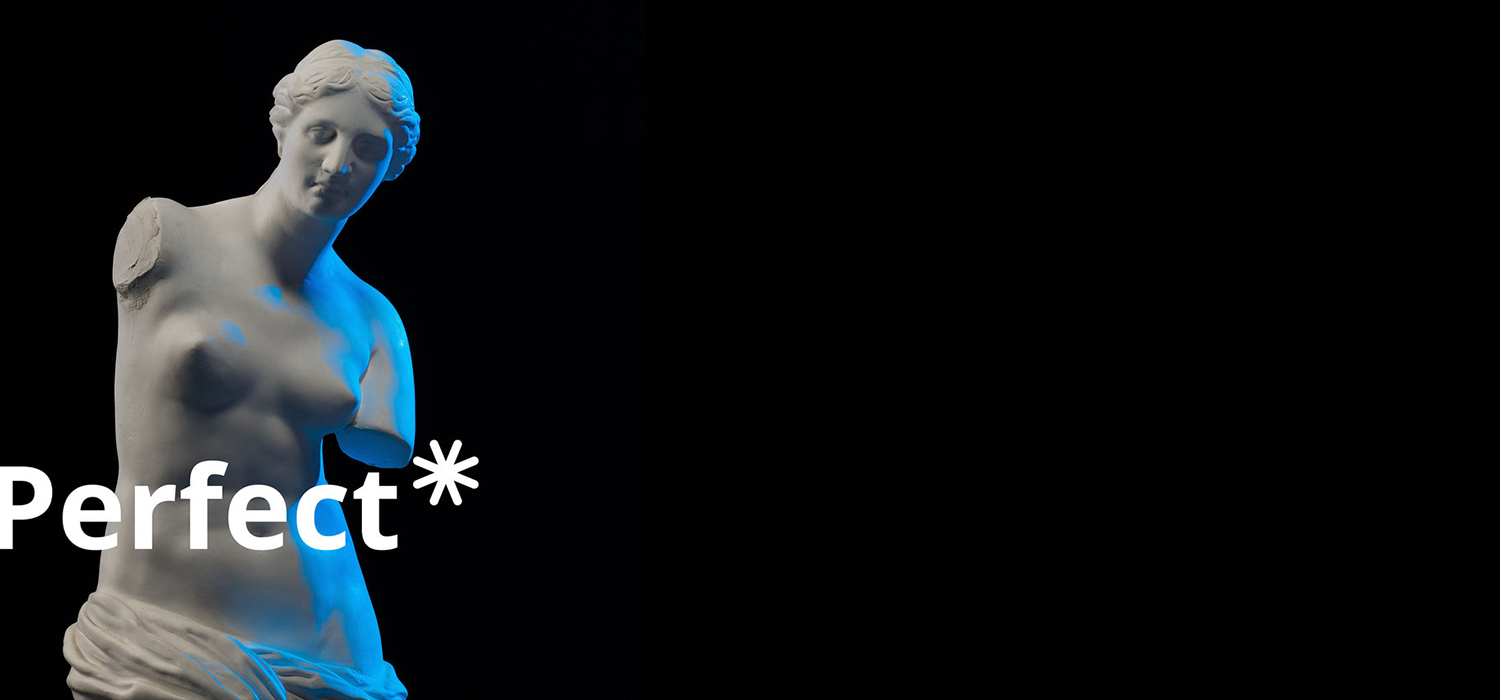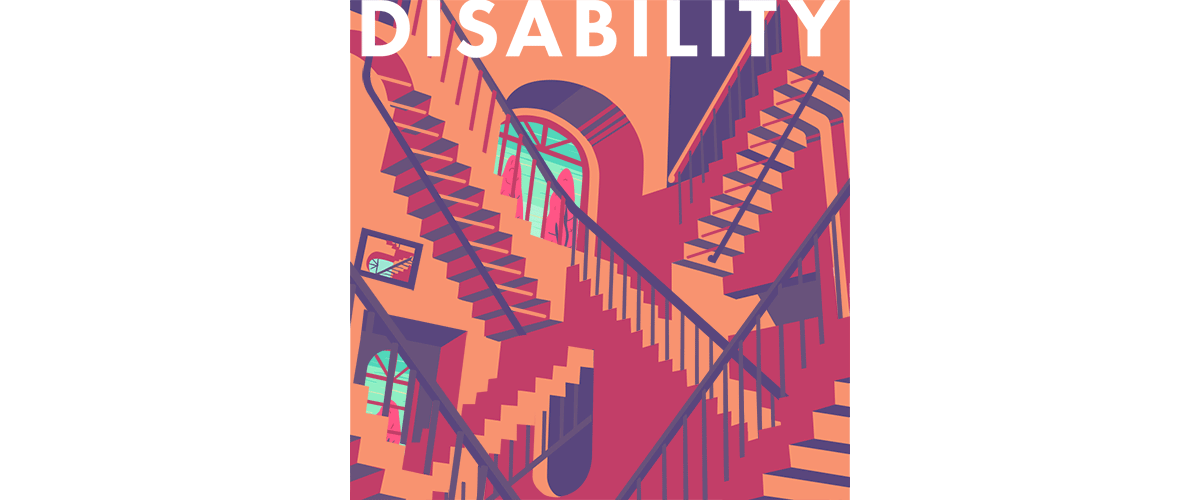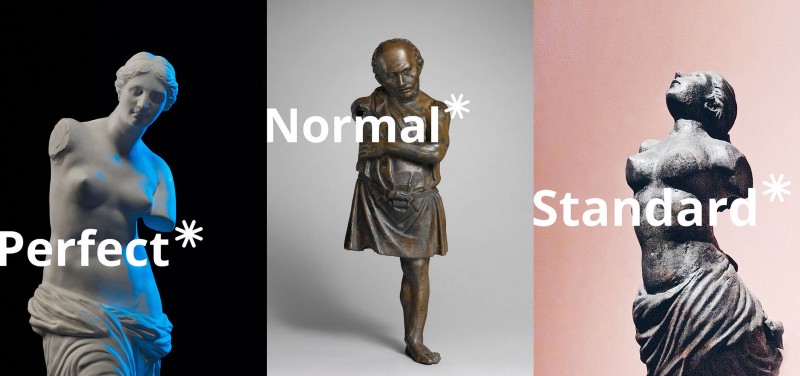

In the late 1970s and early 1980s, when I was an undergraduate, there were no ramps to get into campus buildings that had stairs at their entrance. But when I returned to the same campus 15 years later to visit a class reading my first memoir, I noticed a ramp into the building. Once inside, however, I faced a long flight of stairs down to where the class was held.
This is one of the stories I usually tell when talking about the social model of disability, in which physical and other barriers cause a person to be disabled. In this model of understanding disability, a disability is not rooted in the body but in the constructed environment in which we live. In this example, my body remains the same; it is the building itself that is the barrier.
Often, when I tell this story, I add that, in our current culture, a building to which African-Americans or women or Jews were denied entrance would cause an uproar. In this way, those of us who live with disabilities are placed in the context of civil rights, a discussion that is often as exclusionary of disabled folks as inaccessible buildings are.
There are other barriers beyond the physical. While visiting Dresden for the first time, my husband and I were waiting for a tram from the train station when a woman came over, touched my shoulder, and said that there was an angel residing there. This reminded me of when I was in Tel Aviv outside the House of the Diaspora, where a gardener got down on his knees to pray for me. The vestiges of the religious/moral model, in which a disabled person is seen as evil (totally bad) or saintly (totally good), still evoke fear and pity. There is still a rush to explain, rather than experience, difference.
And the medical model, in which bodily impairment is the cause of disability and in which the desired end is to eradicate the disability by curing it or killing it, still predominates. Governments decide eligibility for disability benefits according to the medical model. This practice prevails around the world–in the U.S., where Social Security requires “gainful and sustained employment,” and in countries, like Japan, which calculate benefits based on how many limbs a person is missing or how many limbs impair daily function. Though the Americans with Disabilities Act, seen as landmark civil rights legislation, acknowledges the social model by requiring employers to offer “reasonable” accommodations to allow disabled employees to do their jobs, it nevertheless defines disability by the medical model. The ADA definition of disability is “a person who has a physical or mental impairment that substantially limits one or more major life activities, a person who has a history or record of such an impairment, or a person who is perceived by others as having such an impairment.”
These outdated models overpopulate the cultural narratives in our books, our songs, our movies. These models stubbornly cling to relevance as strongly as the status quo of white straight male power presses forward, despite a demographic future in which so-called minorities claim, if they haven’t already done so, the majority.
Why is it important to know this? It took an American presidential candidate publicly mocking a reporter with a disability for the topic of disability to enter the media glare. Not only did this stir up for many people memories of countless times they have seen disabled people mocked for just walking down the street, but it also reminded people, as writer and activist Andrew Pulrang said amid the maelstrom, that “there are other things more important than hurting our feelings.”
For a brief moment, disability entered presidential politics. But there was no ensuing discussion of disability policy in the election, despite the other candidate’s long history of championing progressive disability policy. As Pulrang pointed out, “a debate moderator could easily use the Trump mockery incident to ask such a question.” This did not happen.
Disability is still seen, and portrayed, as an individual’s issue, usually in sync with the medical model of overcoming a disability. This is how Serge Kovaleski, the disabled reporter mocked by Trump, can be seen. Pulrang describes Kovaleski as someone who has overcome his disability by being a productive, gainfully employed disabled person.
What will it take to include disability in our future debates about diversity? Finally retiring the tired religious/moral and medical models of disability? Realizing that disability is perhaps the most intersectional of identities, crossing racial, gender, sexual orientation, class, and other identities? Seeing disability as central to our mortal lives?

Last summer, I was thesis adviser to a group of School of Visual Arts students pursuing Master of Professional Studies degrees in branding. The students were diverse in race and gender. None were disabled. But each one knew at least someone who was disabled. After learning about disability history and culture, soliciting input from a group of disabled designers and artists, asking important questions, and making connections at the New York City Disability Pride Parade, their project Disable the Barriers was a great success.

Among their discoveries was that they equated disabling stairs with disabling stares. Stairs are a physical barrier. But stares represent attitudinal barriers within us, and within our culture, that disable us from seeing how we are complicit in creating an exclusive society, one which not only physically bars the disabled from full participation but also hinders our discussions about how best to move forward.
We need to take a long look at the long flight of stairs I encountered on revisiting my undergraduate alma mater, and ask questions: Why are the stairs still there? Who decided to put them there and why? How do we best disable the stairs?
Stephen Kuusisto, in his memoir Planet of the Blind, imagines a barrier-free world: “On the planet of the blind no one needs to be cured. . . . The sighted are beloved visitors, their fears of blindness assuaged with fragrant reeds. . . . There is no hunger in the belly . . . . On the planet of the blind self-contempt is a museum.”
To move toward a truly inclusive future, we need to look at the structures that we’ve put in place, question them, and get rid of what impedes our movement forward. We need to imagine as fully as possible what this future can be.


How We Get To Next was a magazine that explored the future of science, technology, and culture from 2014 to 2019. This article is part of our “Disability” Beat, which asks the question: What will it take to include disability in our future debates about diversity? For more dispatches, click the logo.
